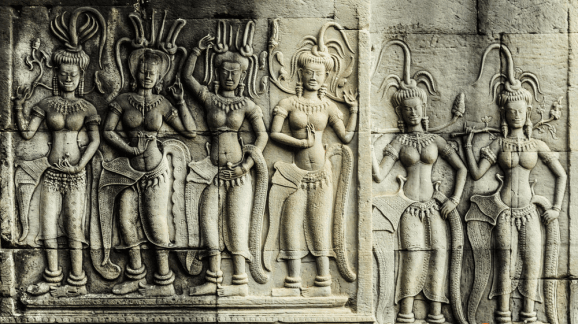
MENZZOO MAGAZINE

APSARA- CAMBODIA'S HEAVENLY DANCERS
If you've ever visted any of the Angkorion Temples in Cambodia, you would of noticed the beautifully crafted bas-reliefs on the temple walls. Among the reliefs, there are thousands of female figures that appear to be dancing,.In Angkor Wat alone there are over 1800 .
These figures are called ‘Apsara’ and according to Cambodian mythology, Apsaras were beautiful celestial maidens that were born as a result of the Churning of the Ocean of Milk (an episode in Cambodia-Hindu mythology) It was believed that the Apsaras descended from heaven.
These Hindu spirits of cloud and water traditionally represented the paragon of feminine beauty, elegance and refinement. They are heavenly nymphs that dance and entertain, seducing both men and divinities.
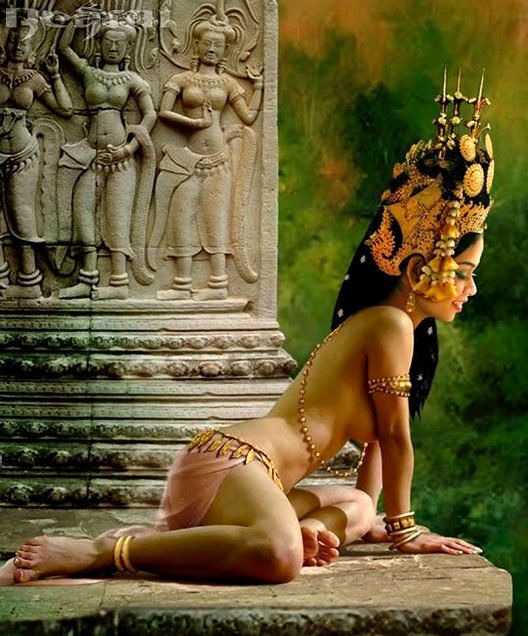
Believed to be the wives of Gandharvas — servants at the palace of Indra, the King of Gods, the nymphs protected the King of Gods by seducing mortals who were seen as threats with their beauty.
Their powers were incredible. Mortals and divinities could not resist the celestial dancers’ charm.
A belief in the female spirit of the clouds and water was so entrenched in Khmer culture that King Jayavarman VII, who was behind the Ta Prohm and Bayon temples, is believed to have had more than 3,000 Apsara dancers in his court. In the ancient times, the Apsara dance was performed only at the Royal Court.

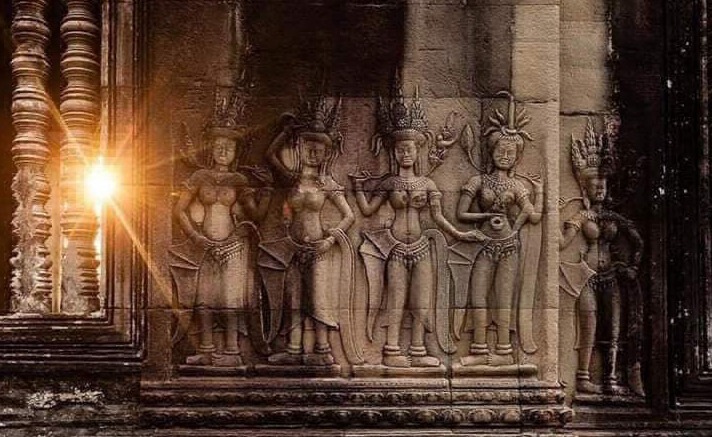
Since then their mortal counterparts have been an integral part of the Cambodian court for more than a thousand years, with temples hosting troupes of dancers that could be summoned in order to please the gods. Kings themselves enjoyed their charms, with large royal harems being composed of classical dancers until the middle of the 20th Century.
The facts around the emergence of the Apsara dance in Cambodia are still ambiguous. Some say it already existed in the 6th and 7th centuries, while others claim that it began in the 8th century, despite evidence that the dance form existed in the 7th century which can be seen in stone carvings at Sambor Prei Kuk temples in Kampong Thom province.
Even so, the dance reached the peak of its popularity in the 12th century during the reign of King Jayavarman VII. The Apsara dance, however, is not exclusively seen in Cambodia, that is, this tradition extends to other nations as well, specifically the countries that were influenced by Hinduism, like Thailand, Indonesia and other East-Asian countries.
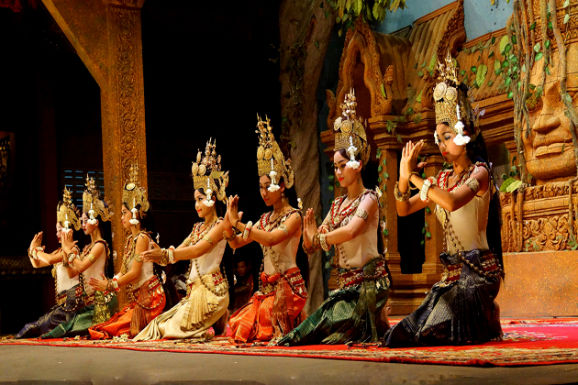
APSARA DANCE
The Apsara dance in Cambodia is known for its beautifully designed costumes, headpieces/headdresses, and accessories, all of which are based on the carvings on the walls of Angkor Wat. The dance is performed by five or seven females who are dressed in silk draping known as ‘Sampot Sarabap’ and accessorised with shimmering golden headdresses, bracelets, and anklets.
The role of the Apsara dancers can be distinguished by the tips or the points of the headpiece. The headdress of the ‘prima ballerina’ or the lead dancer is made with five points and two rows of spherical decorations in the image of the bas-reliefs at Angkor Wat, while the crowns of the ‘corps de ballet’ or the subordinate dancers have only three tips and one row of spherical decorations.
Besides the stunning silk clothes and the crowns, the Apsara dancers are also accessorised with four types of wrist jewellery and two types of golden anklets. It is said that the embellishment of the Apsara dancers are reflective of the wealth and prosperity of the Khmer Empire.
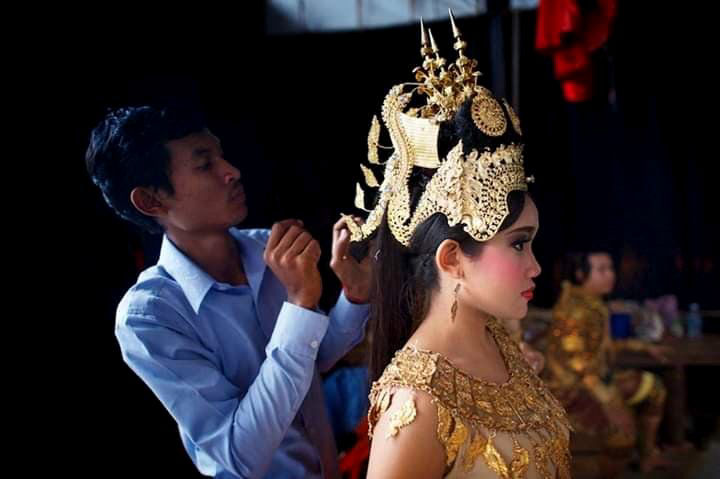
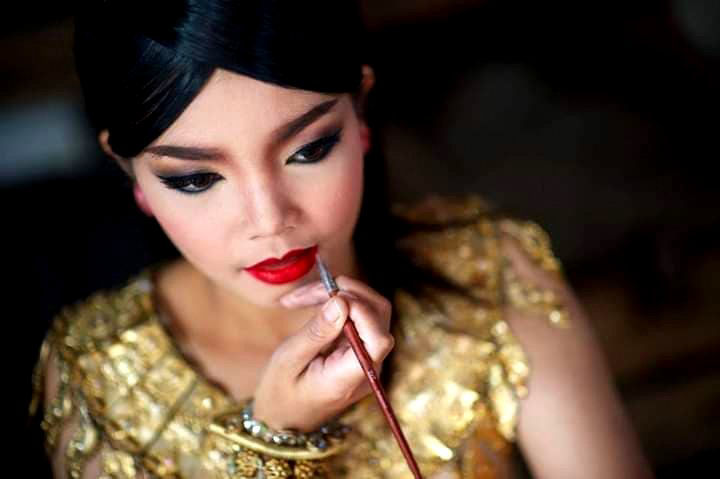
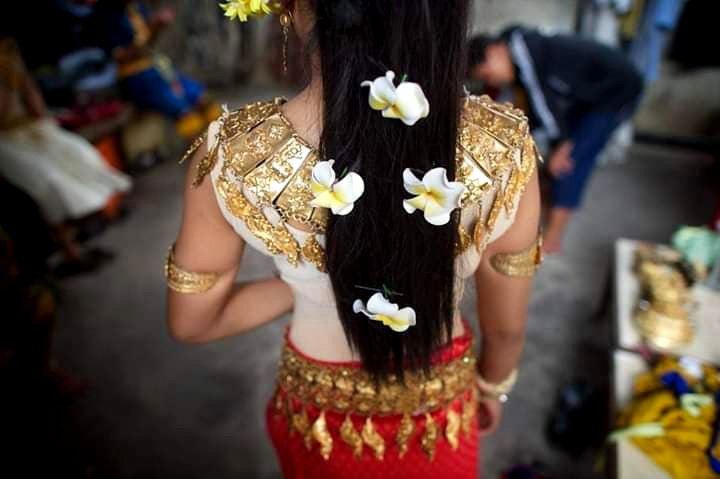
Since the spirits are meant to entrap mortals with their beauty, the dance moves reflect this idea and include slow-paced, mesmerising moves that hypnotize audiences.
The main traits of the dance are the hand gestures, and more than 1,500 exist.
Each movement of the fingers has its own distinct meaning, from worshiping the spirits of nature by depicting a flower in bloom to referencing one of the hundreds of Buddhist and Hindu legends.

The dance is so complex that girls start training from a young age to ensure they gain the flexibility that is needed in their hands and feet to carry out the graceful and intricate moves, which make it look like the women are floating on clouds.
A girl's physical apperance is also taken into onsideration before training to be an Apsara with the emphasis being on a curvacious backside with a well proportioned upper and lower body, as well as stunning beauty and natural grace. Her training will start at early age and will almost always end when she turns 26yrs old.
What makes the Cambodian Aspara dance stand out from the others ,Thai ,Indonesian etc, is the individuality that the Khmer put in the dance in order to express or reflect their culture and identity, starting from the clothes to the accessories to the dancing style. Just by watching the dance, you will get the brief understanding of Cambodia’s personalities and characteristic.
The dance has become so iconic with Khmer culture that in 2008, it was placed on UNESCO’s Representative List of the Intangible Cultural Heritage of Humanity.
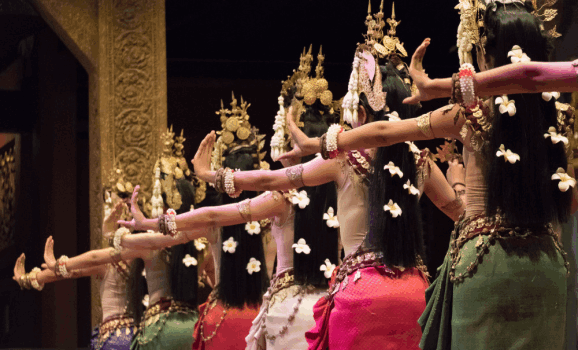
Website was made with Mobirise